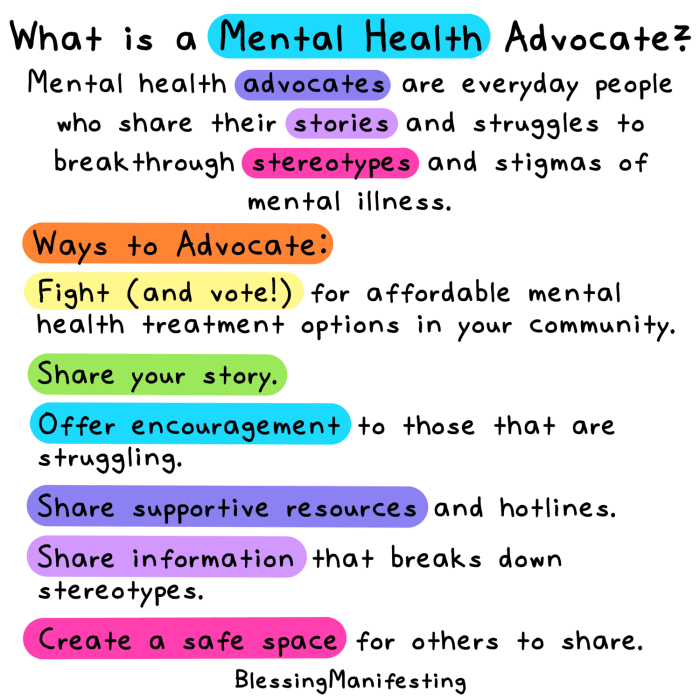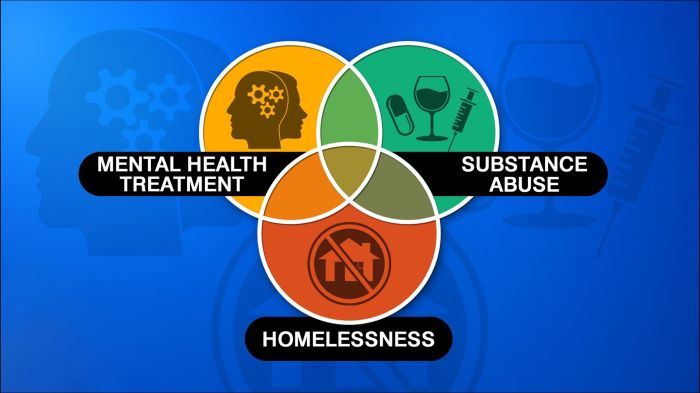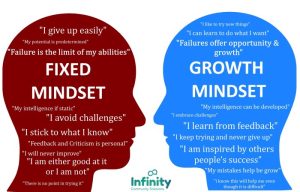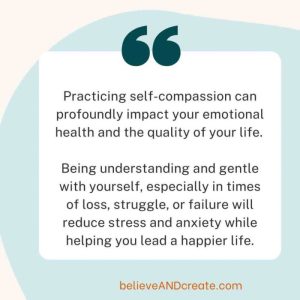Mental Health Advocacy for the Homeless

Mental health advocacy for the homeless is crucial given the disproportionately high rates of mental illness within this vulnerable population. Homelessness itself acts as a significant stressor, exacerbating pre-existing conditions and creating new challenges. This exploration delves into the multifaceted issues surrounding mental healthcare access for homeless individuals, examining systemic barriers, effective advocacy strategies, and practical support mechanisms to improve their well-being.
Understanding the complex interplay between homelessness and mental illness is paramount. Factors such as trauma, substance abuse, and lack of access to consistent care contribute significantly to the mental health crisis experienced by many experiencing homelessness. This necessitates a multi-pronged approach involving improved access to services, community-based support, and targeted interventions designed to address the unique needs of this population.
Effective Mental Health Advocacy Strategies
Effective advocacy for the mental health of homeless individuals requires a multi-pronged approach focusing on accessible services, community engagement, and stigma reduction. Success hinges on understanding the unique challenges faced by this vulnerable population and implementing strategies that directly address their needs.Community-Based Outreach Programs and Mental Health Services for the HomelessCommunity-based outreach programs are crucial for delivering mental health services to homeless individuals.
These programs bring services directly to where the people are—shelters, soup kitchens, and streets—eliminating barriers like transportation and lack of awareness. By building trust and rapport, outreach workers can assess needs, provide immediate support, and connect individuals with appropriate care, including medication management, therapy, and case management. This approach increases accessibility and engagement, improving the likelihood of successful treatment and improved outcomes.
Examples of Successful Advocacy Initiatives
Several successful advocacy initiatives demonstrate the positive impact of targeted efforts. For example, the “Housing First” model, widely implemented across various cities, prioritizes providing permanent housing to homeless individuals with mental illness before addressing other needs. Studies have shown that Housing First significantly reduces hospitalizations, improves mental health outcomes, and decreases reliance on emergency services. Another successful initiative involves partnerships between mental health organizations and primary care providers to integrate mental health screening and treatment into routine healthcare for homeless individuals.
This integrated approach improves early identification and treatment of mental health conditions. These programs often involve assertive community treatment (ACT) teams that provide intensive, individualized support to people with severe mental illness.
A Model Program Addressing Unique Needs of Homeless Individuals with Mental Illnesses
A model program effectively addressing the unique needs of homeless individuals with mental illnesses would incorporate several key elements. First, it would utilize a Housing First approach, ensuring stable housing as a foundation for recovery. Second, it would provide comprehensive case management, coordinating services such as healthcare, substance abuse treatment, and employment support. Third, it would offer peer support services, utilizing the lived experience of individuals who have successfully navigated homelessness and mental illness to provide guidance and encouragement.
Fourth, it would implement trauma-informed care, recognizing that many homeless individuals have experienced significant trauma that can exacerbate mental health challenges. Fifth, the program would foster collaboration with other community agencies and organizations, creating a cohesive network of support. Such a program could be modeled after successful initiatives in cities like Denver, Colorado, where coordinated efforts have demonstrated positive impacts on homelessness and mental health outcomes.
This comprehensive approach ensures that individuals receive the holistic support they need to achieve stability and recovery.
A Public Awareness Campaign to Reduce Stigma Surrounding Mental Illness Among the Homeless
A public awareness campaign should aim to humanize the experiences of homeless individuals with mental illness, counteracting negative stereotypes and promoting understanding. The campaign could utilize compelling narratives of individuals who have overcome challenges, highlighting their resilience and strengths. It could feature public service announcements (PSAs) airing on local television and radio stations, showcasing diverse voices and perspectives.
Social media campaigns could utilize impactful imagery and share stories of recovery. Community events, such as workshops and forums, could provide opportunities for interaction and education. The campaign’s messaging should emphasize that mental illness is a treatable condition and that individuals experiencing homelessness deserve compassion and support. Furthermore, educational materials distributed through shelters and community centers could provide practical information about available resources and how to support someone struggling with mental illness.
This multi-faceted approach will work to create a more inclusive and supportive community for individuals experiencing both homelessness and mental illness.
Depression Support Resources and Strategies
Depression significantly impacts the homeless population, often exacerbating existing challenges and hindering access to essential resources. Understanding the unique barriers faced by this vulnerable group is crucial for developing effective intervention strategies. The intersection of homelessness and mental illness creates a complex web of difficulties, requiring a multifaceted approach to support and treatment.Treating depression in homeless individuals presents unique challenges.
Many lack stable housing, healthcare access, and consistent income, making adherence to treatment plans difficult. Substance abuse, trauma, and social isolation are frequently co-occurring issues that complicate diagnosis and treatment. Furthermore, the stigma associated with mental illness can deter individuals from seeking help, while the transient nature of homelessness makes it difficult to build a therapeutic relationship and ensure continuity of care.
Evidence-Based Interventions for Depression Among Homeless Individuals
Cognitive Behavioral Therapy (CBT) and medication are evidence-based interventions that have shown effectiveness in treating depression among homeless individuals. CBT focuses on identifying and modifying negative thought patterns and behaviors that contribute to depression. Its adaptability to various settings, including community-based programs, makes it a particularly valuable tool. Medication, when appropriate and accessible, can help manage symptoms and improve overall functioning.
However, consistent access to medication and monitoring requires a collaborative effort between healthcare providers and support services. The success of these interventions often hinges on the development of strong therapeutic alliances built on trust and understanding. Successful implementation also requires addressing the practical barriers to treatment access, such as transportation, medication costs, and appointment scheduling.
Community-Based Support Groups and Resources
Several community-based programs provide support and resources specifically designed for homeless individuals experiencing depression. These often include drop-in centers offering peer support groups, mental health counseling, and case management services. Some organizations offer housing assistance, job training, and other resources that address the social determinants of health, thus creating a holistic approach to recovery. For example, many cities have shelters that partner with mental health providers to offer on-site counseling and medication management.
Furthermore, some faith-based organizations and non-profit groups offer similar support services, creating a network of resources for individuals seeking help. These resources can provide a vital sense of community and belonging, crucial for those struggling with isolation and depression.
Practical Self-Help Strategies for Coping with Depressive Symptoms
It is important to emphasize the value of practical self-help strategies in managing depressive symptoms. While professional help is crucial, individuals can actively participate in their own recovery through accessible self-care techniques.
- Engage in regular physical activity, even short walks can improve mood.
- Prioritize healthy eating habits, focusing on nutritious foods.
- Practice mindfulness techniques such as meditation or deep breathing exercises.
- Maintain a regular sleep schedule, aiming for 7-9 hours of sleep per night.
- Connect with supportive friends, family, or community members.
- Engage in activities that bring joy or a sense of accomplishment, however small.
- Limit exposure to stressors as much as possible.
- Seek out professional help when needed; recognizing the limitations of self-help and seeking expert guidance is a strength, not a weakness.
Mindfulness Practices for Enhanced Well-being

Mindfulness, the practice of paying attention to the present moment without judgment, offers a powerful pathway to improved mental and emotional well-being, particularly for individuals experiencing homelessness. The challenges of homelessness – lack of stability, safety concerns, and limited access to resources – can significantly impact mental health. Mindfulness provides a readily accessible tool to manage stress, anxiety, and depression, fostering resilience and a sense of inner calm.Mindfulness techniques can help homeless individuals by cultivating self-awareness, reducing reactivity to stressful situations, and promoting emotional regulation.
By focusing on the present moment, individuals can detach from overwhelming thoughts about the past or anxieties about the future, finding a sense of grounding and stability amidst chaos. This increased self-awareness can also empower them to make healthier choices and better manage their overall well-being. Furthermore, regular mindfulness practice can help to reduce feelings of isolation and hopelessness, fostering a sense of connection with oneself and the present moment.
Guiding a Homeless Individual Through a Mindfulness Exercise
A simple and effective mindfulness exercise involves focusing on the breath. Begin by finding a comfortable seated or lying down position. Encourage the individual to close their eyes gently, if comfortable. Then, guide them to bring their attention to the sensation of their breath entering and leaving their body. They can notice the rise and fall of their chest or abdomen.
If their mind wanders, which is perfectly normal, gently redirect their attention back to the breath without judgment. This process can be repeated for 5-10 minutes, gradually increasing the duration as comfort allows. It’s crucial to create a safe and non-judgmental space for this exercise.
Resources and Materials for Teaching Mindfulness
Several resources can facilitate the teaching of mindfulness to homeless individuals. Simple guided meditations, readily available online or through apps like Insight Timer or Calm, can provide structure and support. These apps often offer free content and can be accessed using smartphones or tablets. Printed materials, such as handouts with brief instructions and mindful breathing exercises, can also be helpful, particularly for those with limited digital access.
Furthermore, training materials for facilitators are available from organizations like Mindful Schools and the Center for Mindfulness in Medicine, Health Care, and Society, providing structured approaches to teaching mindfulness in various settings. Visual aids, such as images of calming nature scenes, can enhance the experience. A simple image of a tranquil lake or a peaceful forest can provide a focal point for the individual’s attention during meditation.
A Short Mindfulness Script for Homeless Shelters
“Find a comfortable position, either sitting or lying down. Close your eyes gently if you wish. Now, bring your attention to your breath. Notice the feeling of the air entering your nostrils, filling your lungs, and then leaving your body. Feel the gentle rise and fall of your chest or belly.
If your mind wanders, that’s okay. Simply acknowledge the thought and gently guide your attention back to your breath. Continue to focus on your breath, noticing the sensations without judgment. Let go of any worries or anxieties. Just be present with your breath, in this moment.
This is your time for peace and calm.”
Exploring Therapy and Counseling Options
Accessing appropriate and effective mental healthcare is crucial for homeless individuals grappling with a range of mental health conditions. The challenges faced by this population, however, often create significant barriers to accessing traditional therapy models. Understanding the different therapeutic approaches and their suitability, as well as the unique obstacles and potential solutions, is paramount to improving mental health outcomes for this vulnerable group.Effective therapeutic interventions for homeless individuals must consider their unique circumstances, including unstable housing, lack of resources, and potential trauma histories.
A multi-faceted approach, combining various therapeutic strategies and support systems, is often necessary to achieve positive outcomes.
Types of Therapy Effective for Homeless Individuals
Several therapeutic approaches have proven effective in addressing the mental health needs of the homeless population. Cognitive Behavioral Therapy (CBT) is frequently utilized due to its focus on identifying and modifying negative thought patterns and behaviors. CBT’s structured approach and relatively short-term nature make it particularly suitable for individuals with limited time and resources. Dialectical Behavior Therapy (DBT), which emphasizes emotional regulation and distress tolerance skills, is also beneficial, especially for those experiencing intense emotional distress or self-harming behaviors.
Trauma-focused therapies, such as Trauma-Focused Cognitive Behavioral Therapy (TF-CBT), are essential for addressing the high prevalence of trauma among homeless individuals. These therapies help individuals process traumatic experiences and develop coping mechanisms to manage related symptoms. Motivational Interviewing (MI) can be a powerful tool for engaging individuals in treatment and fostering self-motivation for change.
Comparing Therapeutic Approaches
Individual therapy provides a safe and confidential space for individuals to explore their thoughts, feelings, and experiences with a therapist. This one-on-one approach allows for personalized attention and tailored treatment plans. Group therapy offers a supportive environment where individuals can connect with peers facing similar challenges, share experiences, and learn from one another. The shared experience can reduce feelings of isolation and promote a sense of community.
Family therapy, while less commonly accessed by the homeless population due to fractured family relationships or lack of contact, can be highly beneficial when family involvement is possible. It aims to improve communication and dynamics within the family system, creating a more supportive environment for the individual. The choice of approach depends on the individual’s needs, preferences, and the availability of resources.
Challenges in Providing Effective Therapy to Homeless Individuals, Mental health advocacy for the homeless
Providing effective therapy to homeless individuals presents numerous challenges. These include inconsistent access to healthcare, transportation difficulties, lack of stable housing, and the complexities of managing multiple needs simultaneously (such as substance use, unemployment, and physical health issues). Many homeless individuals also face stigma, mistrust of the mental health system, and difficulties engaging in long-term treatment. Additionally, the high turnover rate among homeless shelters and transitional housing programs can disrupt treatment continuity.
Solutions to Improve Access and Effectiveness of Therapy
Addressing these challenges requires a multi-pronged approach. Mobile mental health services can bring therapy directly to individuals in shelters, on the streets, or in other locations where they congregate. Utilizing telehealth platforms expands access to care, overcoming geographical barriers and scheduling constraints. Integrating mental health services within existing homeless service programs (such as shelters and soup kitchens) streamlines access to care and reduces barriers.
Building trust through culturally sensitive and trauma-informed approaches is vital. Providing incentives, such as transportation assistance or gift cards, can encourage engagement in therapy. Finally, establishing strong referral networks and collaborations among service providers ensures comprehensive and coordinated care.
The Role of Peer Support and Recovery-Oriented Approaches
Peer support, involving individuals with lived experience of homelessness and mental illness, plays a crucial role in improving treatment outcomes. Peer support specialists can provide empathy, understanding, and practical guidance, helping individuals navigate the challenges of accessing and engaging in mental health services. Recovery-oriented approaches emphasize the individual’s strengths, resilience, and ability to lead a meaningful life despite their challenges.
These approaches focus on hope, self-determination, and the individual’s personal recovery journey, fostering a sense of empowerment and control. By embracing these approaches, mental health services can move beyond a solely deficit-based model and focus on fostering individual growth and well-being.
Building Resilience and Coping Mechanisms

Building resilience and coping skills is crucial for homeless individuals facing significant adversity. These skills equip them to navigate challenges, manage stress, and ultimately improve their well-being and chances of achieving stability. Fostering a sense of hope and self-efficacy is paramount in this process, empowering individuals to believe in their ability to overcome obstacles and create positive change in their lives.
Strategies for Enhancing Resilience
Resilience isn’t a fixed trait; it’s a skill that can be learned and strengthened. The following strategies, categorized for clarity, provide a framework for building resilience among homeless individuals. These approaches address emotional, behavioral, and cognitive aspects, acknowledging the multifaceted nature of resilience.
| Category | Strategies and Examples |
|---|---|
| Emotional |
|
| Behavioral |
|
| Cognitive |
|
Fostering Hope and Self-Efficacy
Instilling hope and self-efficacy is critical for building resilience. Hope provides a sense of possibility and motivation to pursue goals, while self-efficacy refers to the belief in one’s ability to succeed. Interventions that highlight past successes, emphasize strengths, and provide opportunities for skill-building are essential. For example, a successful completion of a vocational training program could significantly boost self-efficacy, providing tangible evidence of capability.
Similarly, celebrating small victories along the way reinforces positive self-perception and maintains momentum.
Activities and Interventions Promoting Personal Strength
A range of activities and interventions can directly promote personal strength and resilience. These include individual and group therapy, skills training workshops, peer support groups, and access to recreational and creative activities. The importance of providing a safe and supportive environment cannot be overstated; this fosters a sense of trust and allows individuals to openly explore their challenges and build coping mechanisms.
Furthermore, integrating these strategies into a holistic approach, acknowledging the interconnectedness of physical, mental, and social well-being, is crucial for long-term success.
The Impact of Sleep on Mental Health: Mental Health Advocacy For The Homeless
Sleep is a fundamental human need, crucial for both physical and mental well-being. For individuals experiencing homelessness, consistent and restful sleep is often a significant challenge, exacerbating existing mental health issues and hindering recovery. The lack of safe, secure, and comfortable sleeping environments contributes significantly to sleep deprivation, creating a vicious cycle of poor sleep, worsened mental health, and increased vulnerability.The relationship between sleep deprivation and mental health challenges among the homeless population is complex and multifaceted.
Insufficient sleep is strongly linked to an increased risk of developing or worsening conditions such as depression, anxiety, and post-traumatic stress disorder (PTSD). The chronic stress associated with homelessness – including lack of shelter, food insecurity, and exposure to violence – further disrupts sleep patterns, creating a heightened vulnerability to mental health problems. Studies have shown a direct correlation between the number of nights spent unsheltered and the severity of mental health symptoms.
For example, individuals experiencing chronic homelessness often report significantly lower sleep quality and duration compared to those with stable housing.
Impact of Poor Sleep Hygiene on Mental Health Outcomes
Poor sleep hygiene, encompassing irregular sleep schedules, exposure to light and noise at night, and the lack of a comfortable and safe sleep environment, significantly impacts mental health outcomes in homeless individuals. These factors contribute to sleep fragmentation, reduced sleep efficiency, and daytime sleepiness, all of which can worsen symptoms of depression, anxiety, and other mental illnesses. The absence of a consistent bedtime routine further disrupts the body’s natural sleep-wake cycle, making it difficult to fall asleep and stay asleep.
This disruption can lead to increased irritability, difficulty concentrating, and decreased emotional regulation, making it harder for individuals to cope with the daily stressors of homelessness. Furthermore, poor sleep hygiene can interact with pre-existing mental health conditions, creating a synergistic effect that worsens symptoms and reduces the effectiveness of treatment.
Practical Tips for Improving Sleep Quality for Homeless Individuals
Creating a relaxing bedtime routine, even in challenging circumstances, can significantly improve sleep quality. This could involve simple practices such as engaging in quiet activities like reading or listening to calming music before bed. Minimizing exposure to bright light and screens in the hour before sleep can also be beneficial. If possible, finding a quiet and dark place to sleep, even if it’s a temporary arrangement, can improve sleep quality.
Practicing relaxation techniques like deep breathing or progressive muscle relaxation can help reduce anxiety and promote relaxation before sleep. Access to warm drinks like herbal tea can also aid in relaxation. Encouraging individuals to prioritize a consistent sleep schedule, even if it means establishing a routine for waking up and going to bed at roughly the same times each day, is essential.
These small changes, while seemingly insignificant, can cumulatively improve sleep quality and overall well-being.
Sleep Hygiene Program in a Homeless Shelter Setting
A comprehensive sleep hygiene program in a homeless shelter could involve several key components. First, a dedicated, quiet space could be created for sleep, minimizing noise and light disturbances. This might involve designating specific sleeping areas, providing earplugs and eye masks, and implementing quiet hours. Secondly, educational workshops could be conducted to educate residents on the importance of sleep hygiene and provide practical tips for improving sleep quality.
These workshops could cover topics such as creating a relaxing bedtime routine, managing stress and anxiety, and understanding the impact of light and noise on sleep. Thirdly, the shelter could provide access to resources such as comfortable bedding, earplugs, and eye masks to improve the sleep environment. Fourthly, a collaborative approach involving shelter staff, healthcare professionals, and mental health specialists is crucial for the success of the program.
This ensures a holistic approach to improving sleep hygiene and addressing the underlying mental health issues that contribute to sleep problems. Regular monitoring and evaluation of the program’s effectiveness would allow for necessary adjustments and improvements over time. The program could also incorporate individual sleep assessments to tailor interventions to meet the specific needs of each resident.
Addressing Addictions in the Homeless Population
Homelessness and substance abuse are tragically intertwined, creating a complex cycle of hardship and poor health outcomes. A significant portion of the homeless population struggles with addiction, often to alcohol, stimulants, or opioids, significantly exacerbating their already vulnerable situation and hindering their ability to access essential resources and support. This interconnectedness between homelessness and addiction necessitates a comprehensive and integrated approach to treatment and recovery.The high prevalence of substance abuse among homeless individuals significantly impacts their mental health.
Addiction itself can trigger or worsen pre-existing mental health conditions like depression, anxiety, and psychosis. Conversely, untreated mental illnesses can increase the likelihood of substance abuse as individuals may self-medicate to cope with their symptoms. This creates a vicious cycle where both the addiction and mental illness fuel each other, leading to a decline in overall well-being and increased difficulty in achieving stability.
For example, an individual experiencing chronic untreated schizophrenia might turn to alcohol to manage distressing hallucinations, further worsening their mental health and increasing their risk of homelessness.
Effective Treatment Approaches for Co-occurring Disorders
Effective treatment for co-occurring disorders (COD), also known as dual diagnosis, requires a holistic approach that addresses both the addiction and the mental health condition simultaneously. This integrated care model often involves a multidisciplinary team of professionals, including psychiatrists, psychologists, social workers, and addiction specialists. Treatment may include medication-assisted treatment (MAT) for substance use disorders, psychotherapy to address underlying mental health issues, and case management to help individuals navigate the complexities of accessing housing, employment, and other essential services.
For instance, a person with bipolar disorder and opioid addiction might receive mood stabilizers to manage their bipolar symptoms, methadone or buprenorphine for opioid withdrawal, and cognitive behavioral therapy (CBT) to help them develop coping mechanisms and avoid relapse.
The Importance of Integrated Care Models
Integrated care models are crucial for effectively addressing the complex needs of homeless individuals with co-occurring disorders. These models emphasize collaboration between different healthcare providers and social service agencies to ensure that individuals receive comprehensive and coordinated care. By providing services in a single location or through a coordinated network, integrated care reduces fragmentation of services, improves access to care, and enhances treatment outcomes.
This approach recognizes that addressing addiction without addressing the underlying mental health condition, and vice versa, is unlikely to lead to sustained recovery. For example, a coordinated care system might involve a primary care physician, a mental health professional, and an addiction specialist working together to develop a personalized treatment plan, while also connecting the individual with housing support and job training.
Resources Available for Homeless Individuals Struggling with Addiction
The availability of resources varies greatly depending on location and funding. However, several crucial resources can often be accessed by homeless individuals struggling with addiction:
Access to these resources is often facilitated through outreach programs, homeless shelters, and community health centers. Navigating these systems can be challenging, however, highlighting the need for comprehensive case management support.
- Substance abuse treatment centers: Offer detoxification, residential treatment, and outpatient services.
- Mental health clinics: Provide therapy, medication management, and psychiatric care.
- Housing assistance programs: Help individuals find and maintain stable housing.
- Support groups: Offer peer support and recovery resources (e.g., Alcoholics Anonymous, Narcotics Anonymous).
- Medication-assisted treatment (MAT) programs: Utilize medications to manage withdrawal symptoms and cravings.
Promoting Personal Growth and Self-Care
Maintaining mental well-being is crucial for everyone, but it presents unique challenges for homeless individuals. The lack of stable housing, consistent access to resources, and the constant stress of survival can significantly impact mental health. Prioritizing self-care, however, can be a powerful tool in building resilience and fostering a sense of control amidst challenging circumstances. Self-care practices offer a pathway to improved mental health, reduced stress, and a greater sense of self-worth.Self-care practices are essential for maintaining mental well-being among homeless individuals because they provide a sense of agency and control in an often chaotic life.
These practices can help manage stress, improve mood, and promote overall emotional regulation. The absence of these practices can exacerbate existing mental health conditions and increase vulnerability to further distress. Prioritizing self-care can help individuals cope with the trauma and adversity they frequently face, fostering hope and a sense of self-worth.
Challenges to Self-Care Among Homeless Individuals
Homeless individuals face numerous obstacles to practicing self-care. Limited access to basic necessities like clean water, sanitation, and safe spaces hinders personal hygiene and relaxation. The constant need to secure food and shelter leaves little time or energy for activities that promote mental well-being. Furthermore, feelings of shame, stigma, and lack of self-esteem can prevent individuals from engaging in self-care activities, believing they are unworthy of such attention.
The pervasive instability of their lives makes it difficult to establish routines and build consistent self-care practices. Financial constraints limit access to resources like gyms, spas, or even simple items such as toiletries.
Accessible and Affordable Self-Care Activities
Many self-care activities are accessible and affordable, even for homeless individuals. Simple practices like deep breathing exercises or mindfulness meditation require no special equipment or resources. Taking a walk in nature, if accessible, can be incredibly restorative. Connecting with supportive individuals through community centers or shelters can foster a sense of belonging and reduce feelings of isolation.
Utilizing free resources such as library books or online educational materials can provide mental stimulation and enrichment. Participating in free community events, like art workshops or group activities offered by charities, can be both engaging and socially beneficial.
A Simple Self-Care Plan for Homeless Individuals
A practical self-care plan should be flexible and adaptable to the individual’s circumstances. A sample plan might include:
- Morning Routine: Start the day with a few minutes of deep breathing exercises or a short mindfulness meditation to center oneself. If possible, engage in light physical activity, such as stretching or a short walk.
- Mindful Moments Throughout the Day: Pause several times throughout the day to take a few deep breaths and focus on the present moment. This can help manage stress and anxiety.
- Evening Routine: Before sleeping, engage in a relaxing activity such as listening to calming music or reading a book. If possible, maintain a regular sleep schedule to improve sleep quality.
- Social Connection: Make an effort to connect with supportive individuals, whether at a shelter, community center, or through a support group. Social connection is vital for mental well-being.
- Self-Compassion: Practice self-compassion and acknowledge the challenges faced. Remember that self-care is not selfish; it’s essential for survival and well-being.
This plan serves as a basic framework; individuals should adapt it to their specific needs and circumstances. Consistency, even in small ways, is key to building a sustainable self-care practice.
Ultimately, effective mental health advocacy for the homeless requires a collaborative effort from healthcare providers, social workers, government agencies, and the community at large. By addressing systemic barriers, promoting accessible and culturally sensitive services, and fostering a climate of understanding and support, we can work towards a future where all individuals, regardless of their housing status, have the opportunity to achieve and maintain optimal mental well-being.
Continued research, innovative programs, and unwavering commitment are essential to realizing this vital goal.
Questions Often Asked
What are common mental health conditions among the homeless?
Depression, anxiety, PTSD, schizophrenia, and substance use disorders are prevalent.
How can I volunteer to help?
Many organizations welcome volunteers for various roles, from direct support to administrative tasks. Contact local homeless shelters or mental health organizations to explore opportunities.
What is the role of integrated care in addressing the needs of homeless individuals?
Integrated care models coordinate mental health and substance abuse treatment, addressing co-occurring disorders simultaneously for better outcomes.
Are there specific legal protections for individuals with mental illness experiencing homelessness?
Laws vary by location, but many jurisdictions offer protections against discrimination and ensure access to certain services.




